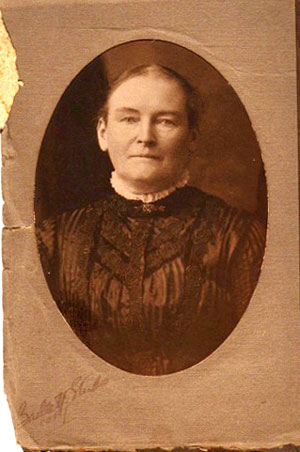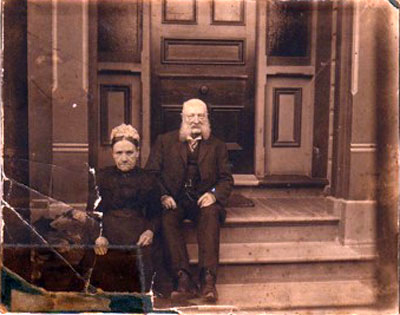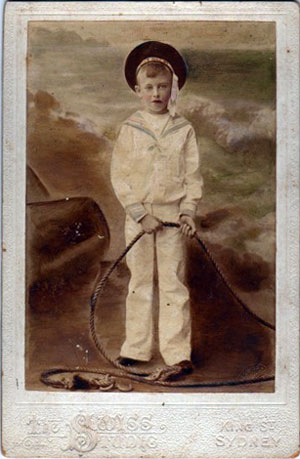
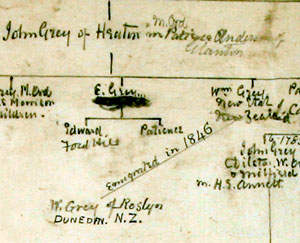
William's oldest son John George, perhaps unhappy with managing a wood yard, and learning of the New Zealand Land Company's offer, emigrated to New Zealand at the age of 25. He travelled on the Bernica, 548 tons; which sailed from London on 7 July 1848, for New Plymouth, arriving on 3 November 1848, at Nelson on 5th, and Wellington and Port Chalmers, where she arrived on 12 December 1848.
In 1849 William and Elizabeth with the rest of the family followed him on a boat called the Larkins which sailed from London on 6 June, docking on 11 September at Port Chalmers, Dunedin. The passenger list has: Grey, William (65) Elizabeth née Archbold, wife (45) William (24) George (22 Edward Henry (18) James (16) Charles (14) Mary (10) Eliza Patience (10).
Elizabeth says in her letter below that: " we never regretted leaving England and the dependant situation we were placed in". This may refer to the fact that William and his two eldest sons had been employed by his nephew George Carr.
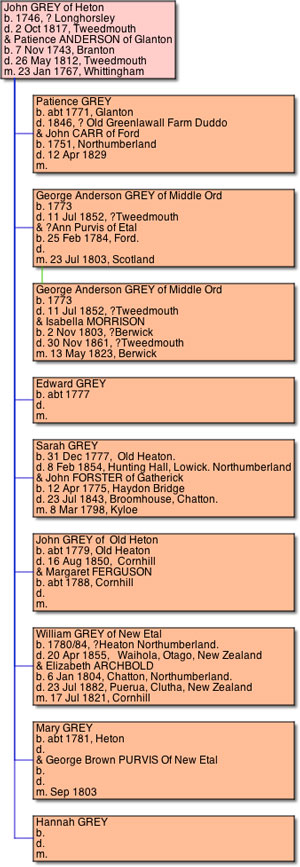
View Earle in a larger map

William Grey 1780-1855 and Elizabeth Archbold the founders of the New Zealand Greys.
William was the youngest son of John Grey and Patience Anderson. He was born in about 1780, in Berwick , possibly at Old Heaton, although passenger records in New Zealand say he was born in 1784. His death certificate in 1855 records his age of 75, so it was most likely recorded as 65 rather than 69 on the passenger list as he may not have been accepted as a suitable candidate for a settler if he had given his true age. We do know that he was the youngest of the brothers. In 1788 when he was a boy his father John and Uncle George bought land in Ord. George lived in West Ord, Sandyhouse and later at Milfield. William's father John kept Middle Ord which had been built in 1783. William's mother died in 1812 and his father John died in 1817. William's eldest brother George took on Middle Ord and his next oldest brother took over at Old Heaton Farm. The Archbolds were their neighbours farming at New Heaton.
In his 40s and said to be a farmer of Ford, (he was also referred to as living at New Etal in an old family tree) he married Elizabeth Archbold at Cornhill on 19th July 1821. Between 1822 and 1840 they had 8 children: John George in 1822, William in 1824, George in 1826, Edward in 1831, Charles in 1833, James in 1836 Eliza in 1838 and Mary in 1840. Most of these children appear to have been born at Earle near Wooler. William, George, Edward and Charles's baptisms can be found in the records of Wooler's United Presbyterian Church, in Cheviot Street, while Eliza's birth certificate records her birth at Earle. Earle was owned by the Selby family. Pigott's directory for 1834 has listed under "Nobility, gentry and clerg " : GRAY, Mr William North Earle.
Shortly after Mary's birth at Earle they moved to Barmoor Mill Farm in Lowick where they can be found on the 1841 census: William aged 50, farmer, with Elizabeth 35, John, aged 19, Elizabeth aged 3, and Mary aged 1 and two female servants. A close neighbour is a George Grey aged 23 at what could be Breakingside, while a poll book for Northumberland dated 1841 shows William Grey at Barmoor Mill and John Grey at Breakingside in Lowick. The missing members of the family can be found at the North side of Ness Street in Berwick on Tweed: William Grey 15 Clerk (1826) George Grey 12 (1829) Edward Grey 9 (1832) Charles Grey 7 (1834) James Grey 5 (1836) and Jane Grey 40, born about 1801 who is a servant. The younger ones were perhaps attending school?
Near Barmoor Mill in Kyloe parish was Berrington Farm owned by William's Uncle James according to an old family tree. The 1841 poll book has John Grey at Berrington and James Grey at Kimmerston both freeholders and based at Berrington. William did not own Barmoor Mill. He was a tenant of the Marquis of Waterford, and paid an annual rent of £70 7s.
North East Valley, Dunedin, Otago, New England. Dec. 15, 1851
My dear Sister, It will surprise you much to receive a letter from me, that for some reason, you never take the trouble to write to, but Mary enclosed one of your letters to her in one to me, and you can form no idea how happy I was in this far off, but beautiful country to hear of your welfare, and that you were so comfortable, I was astonished to hear of my dear nieces marriage.(1) I hope she will be happy. My dear Isabella it appears a short time since you were at Earl. I think I see you with your white turban on and your thin but pretty face. I hope you are fatter now as you are a Grandmother. (2) You have beat me, but John was married on the tenth of July to a very deserving girl and appears very happy, and I think in another half year I will be as far forward as you. I am glad to inform you that I think we will do very well here. My sons all continue very steady and industrious. We have had a hard fight but I think, with the helping of God, will now be comfortable. We have a ten acre section of our own, and I have sot 3 cows and a young heifer and two working bullocks. We have got as much wheat and other grains in this year as will more than supply the family, so we are all in very good spirits with the prospects that is before us. There is one blessing attached to this country, which is good health. You never heard a cough. The climate is healthy, and the country beautiful. The trees are always green and grow to the very edge of the very edge of the salt water. We have never regretted leaving England and the dependant situation we were placed in, as we are all healthy and happy. Indeed, I never saw Mr. Grey so healthy and happy in my life. I have a great deal of work, as all my family are at home but John but my two daughters are a great help to me now. I have them at school this summer and have no servant, therefore you may know that I have plenty to do. My youngest girl, Mary, is very like you, her hair is the same colour, but she has more colour in her cheeks than ever you had Elizabeth Patience has fine auburn hair and is not like any of us, is more like the Greys. She will be 14 in March. Mary is two years younger. All my 6 sons are strong hardy fellows and can wield the axe as well as any colonist amongst them, I was much, hurt my dear sister that you never mentioned my name in your letter to Anne. I was not aware that I ever was an unkind sister to any of you. I hope you will never do so again. I am glad to hear that my dear John is still living. Give my kind love to him, also my kindest love to Jessie. I am glad to hear that my dear nephews-are doing so well. Kiss them all for me, and tell my dear Jessie that I would like much to hear from her. Kiss all my dear nieces for me. Write directly forward it to Mary, and she will send it to me. I wish you may read this. My hand is so stiff with mosquito bites that I can scarcely write at all. Mr Grey joins me in the kindest regards to all your family, including Jessie and her dear family and believe, me ever Your most, affet, sister, E. Grey. Remember me kindly to old Uncle Smith if living, old Mrs. Marshall, and Mrs. Robinson, and be sure and write soon and tell me all about them.
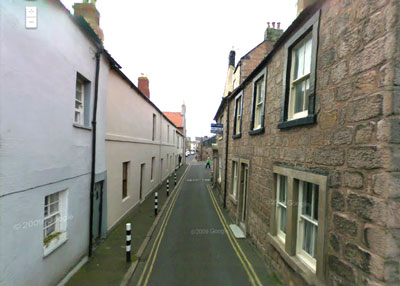
A letter written in 1846 from one of Elizabeth Archbald's sisters to another gives news of the family.
The writer Mary Bellis has had a letter from Elizabeth's son William to say that "He is with George Carr (1) and has charge of the books, Cash and Dr. and has one hundred per annum. John has the management of Mr. G. Carr’s wood yard and receives a salary of fifty pounds per annum. William says the pay is small but it is owing to his being at first entirely ignorant of the trade. Before he went to Mr. Carr he was surveying on the roadway and had a guinea per day. George is learning to be a miner at a Colliery on the Tyne and has 18/ per week during the term of his apprenticeship. Edwin is in a draper shop in Newcastle serving his time and the other two boys and girls(2) are at school. His father and mother live five miles from Berwick at Barmoore Red House. It is a farm of Mr Carr’s and Mr Grey manages it for him and William says they are comfortable. I did not know they had moved until I received his letter"
(1) George Carr – Son of John Carr and Patience Grey, William Grey’s sister
(2) Charles, James, Eliza Patience and Mary Grey
A later letter dated Feb, 11 1849 says "Bessie's son John left last July for Otago, New Zealand. William is in America, perhaps you have seen him there. George is a Coal Viewer in New Castle and Edward is with a draper in the same place. The four youngest are at school. Mr Grey is still living, but they are not as they used to be in worldly matters."
View Greys in NZ in a larger map
William's son William lived in the district of Roslyn and became a constable. John George set up a farm which he called Berrington at Milburn. George lived in a house he called Dilston. Edward ran a hotel. Charles was an accountant. James worked on a farm. Eliza Patience married Thomas Davidson and settled in Tuturau, Tokomairiro (Milton), naming their farm "Bamburgh" after the castle in Northumberland. Mary married twice. Elizabeth their mother died in 1882.
Left: Elizabeth Grey nee Archbold. Photo from Julie Simpson.
William Grey. Otago Daily Times , Issue 786, 24 June 1864, Page 4 "Mr Mollison and Mr William Grey of Waihola, have favored us with the inspection of a small parcel of gold obtained at the newly opened workings at that place. The quantity, 3 ozs 11 dvrts, is chiefly made up of coarse ft it pieces of gold. It was obtained upon the ridges above the ground first opened. Mr Mollison obtained it from the storekeeper who purchased it from the party that procured it. On the lower ground the gold seems to be less coarse. Mr Grey tells us he has seen nuggets weighing two ounces from the locality. There are only about fifty miners on the spot"
´OBITUARY. Otago Daily Times , Issue 9405, 19 April 1892, Page 6 WILLIAM GREY, One more of the old residents has taken his farewell, and his remains have been committed to the keeping of the Northern Cemetery. All though not a public man, Mr William Grey filled an important part in developing the resources of young Otago. Arriving in Dunedin * by the Berncia, a youth with all the energy and aspirations of his Northumberland progenitors, he carried on a business in Princes street for a few years. The town was, however, becoming over-populated. Every second man was living on the profits of what the first man could produce, and in all conscience products and profits were small indeed. The country districts were, however, being opened up, and a considerable amount of enterprise was being displayed among other firms in Dunedin in these days about the middle of the 50's was that of W. C. Young and Co., the rival concerns being John Jones and Macandrew. To spread their business as much as possible each of the three selected different localities and Mr Young chose Clarendon, at the head of Waihola Lake. This was a judicious selection, as it opened up or connected traffic with the Tokomairiro and interior districts down half way to the Clutha. Someone had to be associated with Mr Young in the enterprise, to be located on the spot to take management and control. Mr Grey was the individual fixed on, and he accordingly went there sometime in 1854. The firm of W.C Young and Co., was a pretty strong one, John Hyde Harris being a partner and John Jones intimately connected with it, and the aim was to check Macandrew. As it will form a piece of the narrative, it maybe here interpolated that Mr Harris had selected a large portion of the land at the head of Waihola Lake, and formed or laid off the first private township in the province, bestowing on it, the name of a remote ancestor who was reputed to be an offspring of royalty by the person of one of the kings Charles. The whole traffic from the south, so far as the wide area round and called Tokomairiro Hundred is concerned, was carried on by water. The farmers drayed their produce to Clarendon. William Grey took charge and shipped as occasion suited on board the fast-sailing regular traders Huon Belle, Spec, Star, Hope & co., carrying up to 50 tons register, under command of Captains Harrold, Simpson, Blackie, and other favourites for the time being. The small jetty built at the expense of Messrs Young and Harri, as well as the store proved a fortunate venture. There being no reliable roadway to Dunedin, produce had to be shipped from Clarendon and the cost was something considerable, the usual freight being 6d per bushel without covering any risk. Mr Grey and his partners prospered well in the business, it being a monopoly, and even up to 1862, when the domain was encroached on by Henry Houghton and Co. and another firm, matters were brilliant. A change, however, now occurred. The Taieri river was bridged, the highway was metalled, horse teams became numerous, and the days of Clarendon and its trade were settled never to be revived again. It would not be in accordance with facts to say that Mr Grey was a favourite or a popular man in the district. The general run of the setters did not at all appreciate him. Whether this arose from his town connection or not it is impossible to determine. However, he carried with him the respect and confidence of a large number and he made himself prominent among the sporting men of the province. In the last Christmas number of the Witness, under the heading of "Racing in Otago," a special note is made of the great race at Green Island between Dr Sutton's mare ridden by Tom Martin and Greys gelding bearing the owner in the saddle, to which others might be added. In all matters having the advancement of the district in view Mr Grey took a leading part never thrusting himself forward, but giving his opinion with becoming modesty. Having disposed of his farm at Waihola, Mr Grey came to town some 20 years ago, and has since been doing a quiet business. Married to Miss Brotherston in 1854, he leaves behind him his widow and a considerable family, most of whom are married. He has, besides, been the first of half a dozen born in 1824 to leave the ranks, of whom the writer is one, and on our usual day of meeting we shall feel his absence. *Both William Grey and Jane Brotherston arrived in Port Chalmers 11 Sep 1849 aboard the "Larkins".William was listed as a 24 yr old ag. constable, he married Jane 6 years later, his older brother John arrived on the "Bernica".
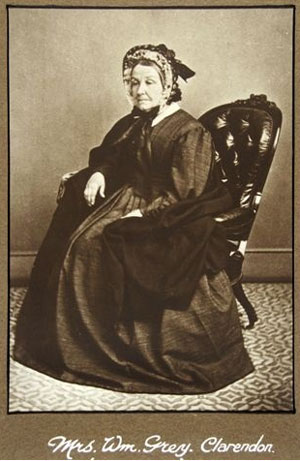
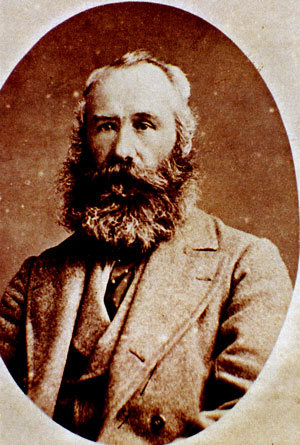
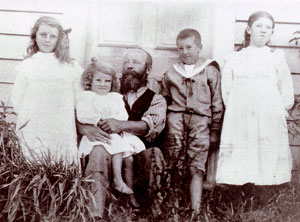
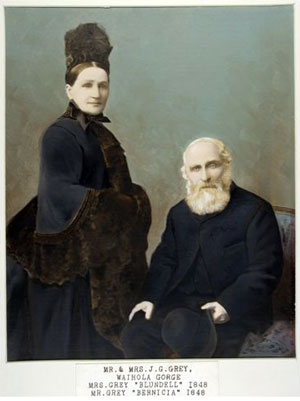
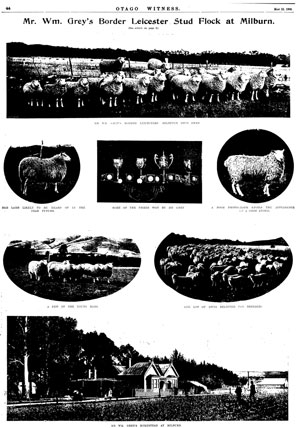

George was a farmer. At first he lived in the same part of New Zealand as his brothers and sisters, south of Dunedin in the Milton, Balclutha area. He married Elizabeth Petchell and when the Petchell family moved further south to Riverton, George, Elizabeth and family moved as well and took up land at Wild Bush in 1869. It was in its natural state and would have had to be cleared and developed. They were the first owners. The house they called Dilston would probably have been a simple cottage and no longer exists.
From book "The Two Posts" by Ethel U. McLaren. 1867... "The visit of Sir George GREY was a highlight in the quiet country district........"
Family lore says that Sir George met some early family members and they thought their families could be linked in the past.
Stones Otago & Southland directory 1887: George Grey, farmer, Riverton.
From "Western Star" 16 February 1887: "Mr G. GRAY, settler, Pourokino, an old and highly respected resident of the district, met his death in a terribly sudden manner yesterday afternoon. From the few particulars we have been able to glean it appears that he was observed to fall down in front of the house, and when assistance immediately arrived there was but the faintest sign of life, which ceased a minute afterwards. Medical assistance was sent for and Dr Young (who is at present on a visit to Riverton) in the absence of Dr Nelson, proceeded to deceased's residence, but the latter was beyond the reach of medical aid. It was supposed at first that Mr GRAY had received a sunstroke, but Dr Young does not think the symptoms support that view, and is of the opinion that heart disease was the cause of death, although in the absence of a post mortem examination the cause of death cannot definitely be ascertained. Deceased leaves a large family (principally grown up) to mourn their terribly sudden bereavement, in which they have the sympathy of a wide circle of friends and acquaintances. He did not enjoy the most robust health for some time past, but there was nothing in his condition to suggest the idea that his end was so near, or that he was suffering from any disease likely to lead to such sudden fatal results."
